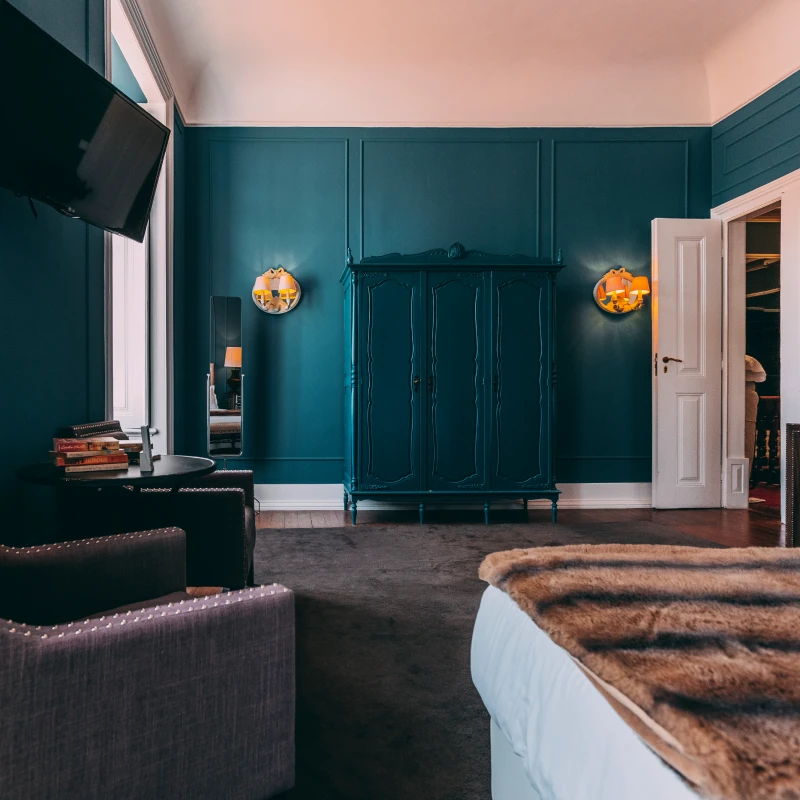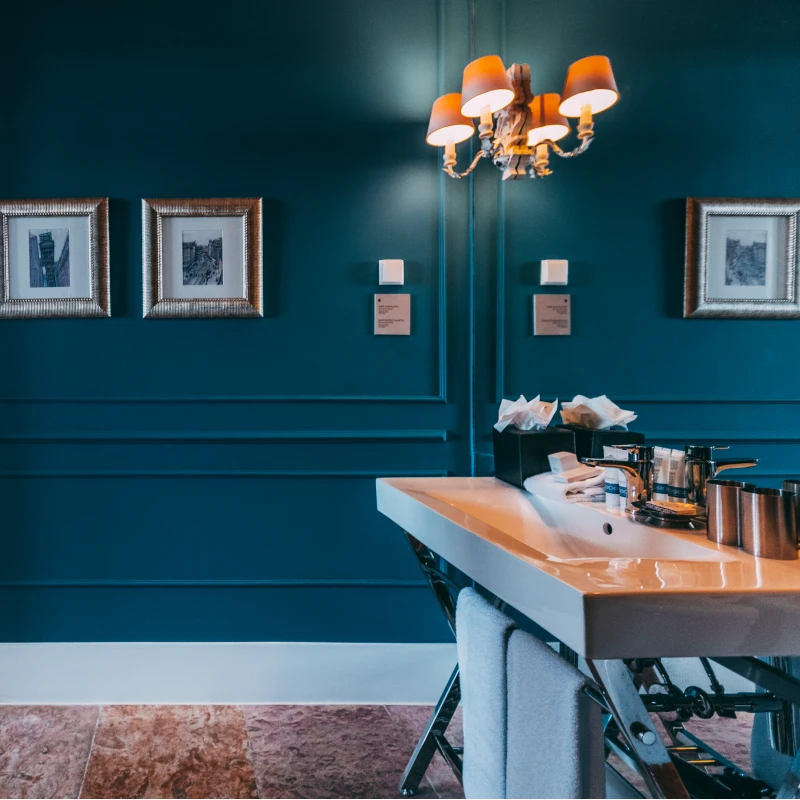Home > Dona Maria Pia
Dona Maria Pia
October, 1847 (Turin, Italy) – July, 1911 (Lisbon, Portugal)
Through the windows of this room, you can admire the iconic São Jorge Castle overlooking Lisbon. The classic-modern décor, enriched with vibrant colors, is inspired by Queen D. Maria Pia, creating a lively and elegant atmosphere for a memorable stay.
The Master – D. Maria Pia spans 30 m², offering a refined and spacious retreat for up to two guests. Decorated in soothing blue and brown tones, the room features a queen-size bed, a mirror, and a desk with chairs, creating a comfortable and elegant living space. Large windows reveal a charming view over the city.
The bathroom continues the room’s sophisticated palette, with matching blue and brown tones, stylish artwork, and tasteful decor that complement the clean design. Amenities include a Delta coffee machine, minibar, TV, free Wi-Fi, air conditioning, hairdryer, and safe. Guests are welcomed with complimentary coffee and water throughout their stay, ensuring a relaxing and enjoyable experience.
- Up to 2 People
- 30 m2
- Queen Size Bed
- View
- Coffee Machine
- Mini Bar
- Television
- Free WiFI
- Air Conditioning
- Hairdryer
- Safe Box
- Offer of Nespresso Coffee and Water throughout your Stay










In Honor of...
Dona Maria Pia

Dona Maria Pia of Savoy was the Queen Consort of Portugal as the wife of King Dom Luís I. Born into the royal House of Savoy in Italy, she married Luís I in 1862 at the age of 15, becoming a beloved figure known for her elegance, charity, and cultural patronage.
Throughout her life in Portugal, Maria Pia was deeply involved in social causes, dedicating herself to helping the poor and promoting education and healthcare. Her influence extended to the arts and architecture, where she supported projects that enriched Portuguese culture.
Known for her vibrant personality and style, she combined traditional royal duties with a modern sensibility, making her one of the most charismatic queens in Portuguese history.
Maria Pia remained a respected figure until her death in Lisbon in 1911, leaving a lasting legacy as a compassionate queen who bridged Italian grace with Portuguese tradition.










